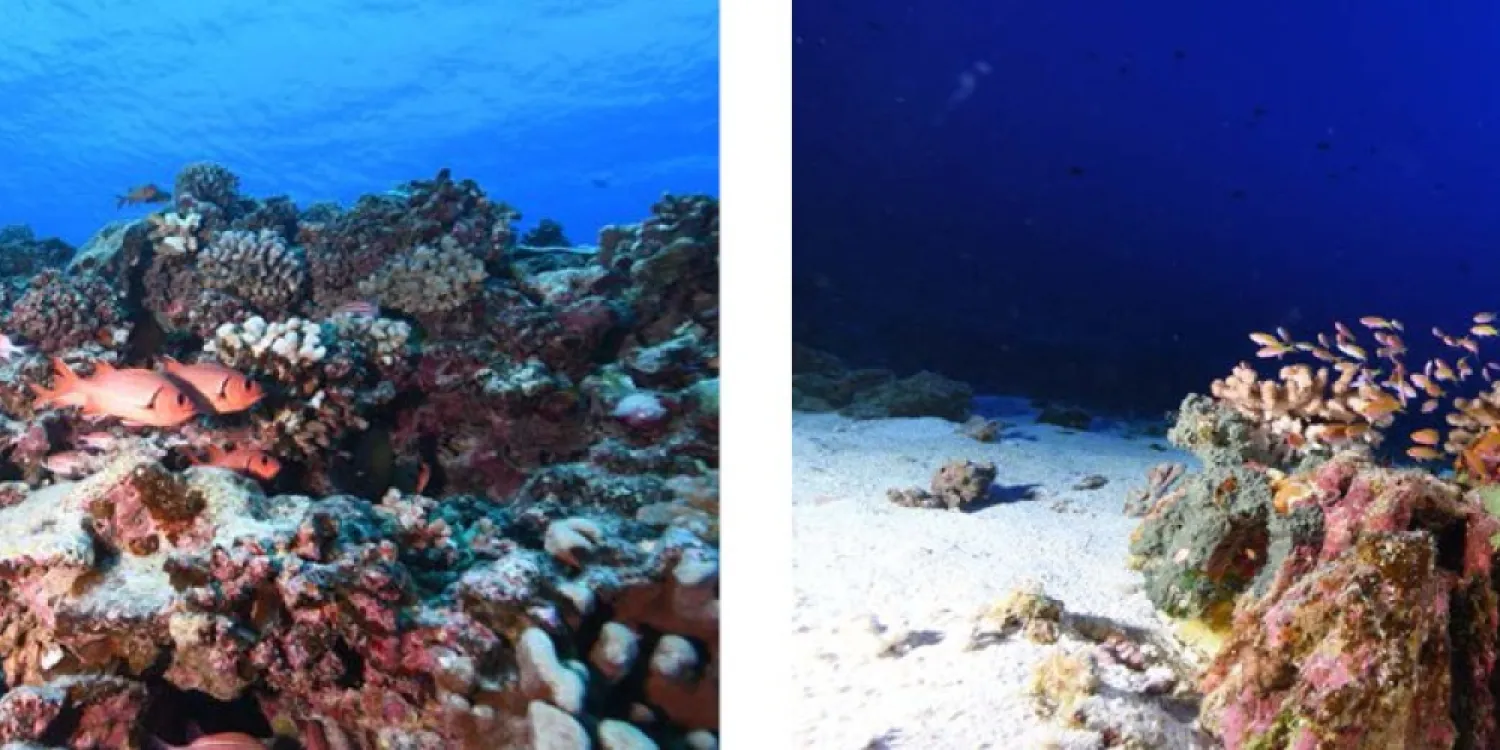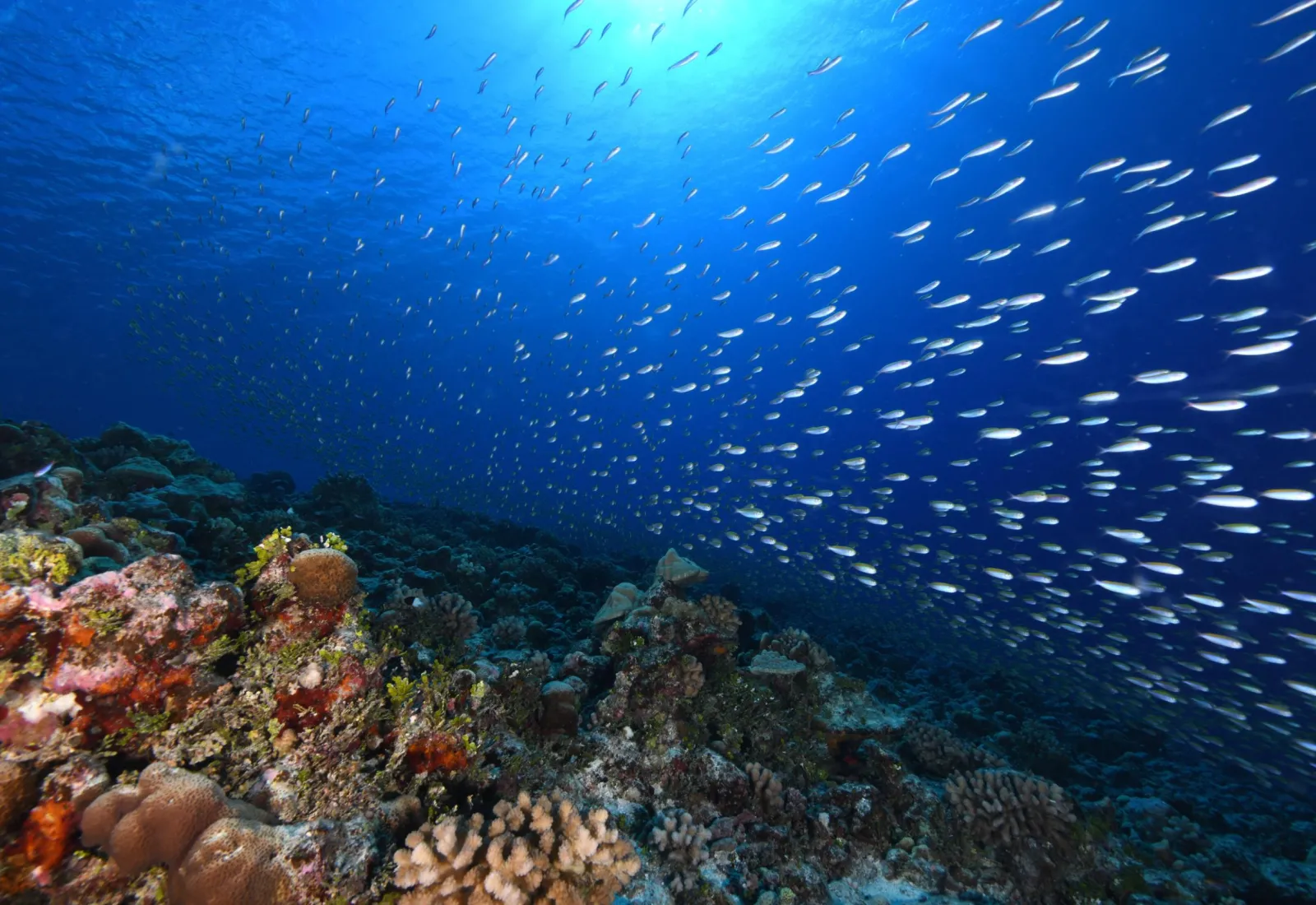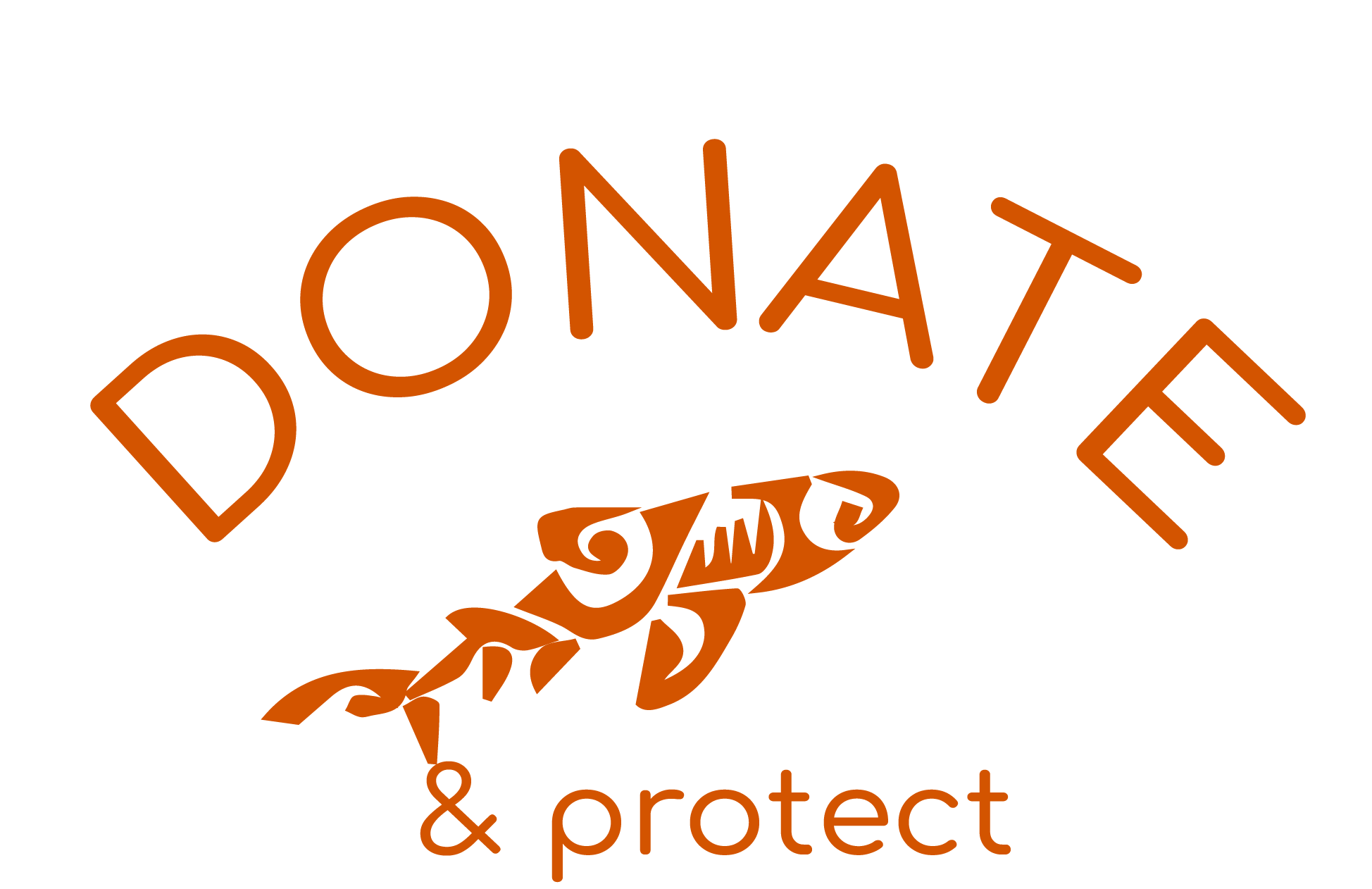Summary of field activities
For a dozen days, Patrick Plantard and Gilles Siu conducted a series of deep dives around Tetiaroa. The dives, carried out using rebreathers and special gas mixtures, allowed them to reach depths of up to 80 meters. On each dive, one of the researchers carried out fish counts while the other photographed the environment and substrate to document the species and their habitats. The same protocol was repeated at a depth of 10 meters to compare community composition between shallow and deeper areas. These logistically and technically demanding operations took place from the Tetiaroa Society boat, with the support of ranger Tuterai, who efficiently ensured safety and organization in the field. One of the outings was also carried out with TMT, providing additional support for logistics and coordination at sea.
Impacts and preliminary results
Initial observations confirm the richness of Tetiaroa's deep reefs. The team identified approximately 226 species and nearly 23,700 individuals, demonstrating significant biomass and healthy populations, particularly for commercial species, which are often observed in large numbers and of good size. These data will be compared with those collected at other sites, notably Moorea and Tahiti, to better understand differences related to protection status. The dives also enriched scientific knowledge on several species, with some photos modifying the minimum or maximum depths known for their presence. An image taken at Tetiaroa will be published in the new edition of the book of fishes of Polynesia, depicting a juvenile Gracilla albomarginata. And even though whales were not part of the protocol, their omnipresent song during a dive struck the researchers, who had the impression that one of them was swimming very close to them.
Perspectives
The next step of the project will be to replicate this work on Moorea's sister island, within the Tiahura Marine Protected Area, in order to compare results between different sites. In the longer term, the team hopes to transform this initial exploration into regular monitoring of deep-sea reefs, to better understand the evolution of marine ecosystems in Polynesia's protected areas. Depending on the results and future funding, the researchers hope to be able to return to Tetiaroa to continue this work and consolidate this particularly promising first set of data.




